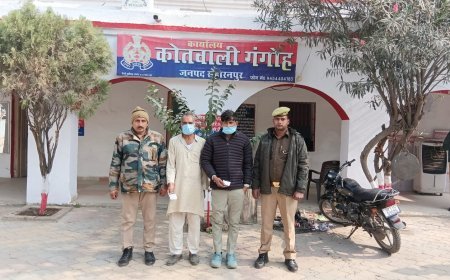Banana emerges as a more profitable alternative to traditional crops in Purvanchal and Awadh regions with Yogi govt's support
More and more farmers are taking to banana cultivation in these regions of Uttar Pradesh

Lucknow: Farmers in Uttar Pradesh are increasingly turning to banana cultivation due to its status as a short-duration cash crop with consistent demand throughout the year. It is being grown extensively in districts such as Kushinagar, Gorakhpur, Deoria, Basti, Maharajganj, Ayodhya, Gonda, Bahraich, Ambedkarnagar, Barabanki, Pratapgarh, Amethi, Kaushambi, Sitapur, and Lakhimpur, covering areas like Purvanchal and Awadh.
The Yogi government is providing a subsidy of around Rs 31,000 per hectare for banana cultivation. Additionally, the transparent distribution of agricultural equipment and subsidies on drip and sprinkler irrigation, along with solar pumps, have further encouraged farmers to adopt cash crops like bananas.
Traditionally, banana farming was concentrated in South India. However, decades ago, cultivation spread to Bhusaval and surrounding areas in Maharashtra, making the Bhusaval banana synonymous with the region. Over time, Bihar's Naugachia bananas gained popularity, particularly in markets across North India, prompting farmers in Kushinagar, near Bihar, to cultivate it on a large scale.
According to data from the Central Institute of Subtropical Horticulture, Rahmankheda, Lucknow, India produces approximately 3.5 crore metric tonnes of bananas annually, with a cultivation area of about 9,61,000 hectares across the country.
In Uttar Pradesh alone, banana cultivation spans around 70,000 hectares, with the total production of 3.172 lakh metric tonnes and an average yield of 45.73 metric tonnes per hectare.
Bananas hold significant value, not only economically, but also for their religious and nutritional importance. No religious ritual is considered complete without the use of bananas or banana leaves.
In addition to being a popular daily breakfast item, bananas are often consumed during fasts. The fruit is also increasingly used for various co-products, including items made from both raw and ripe bananas, as well as fiber from the stem.
While many seasonal fruits are available only during specific months, bananas are among the few fruits available year-round. Unlike most fruits that need to be washed or cut, bananas are easy to consume by simply peeling the skin, making them a convenient choice for many.
According to T. Damodaran, Director of the Central Institute of Subtropical Horticulture, bananas are highly important from a nutritional standpoint. Rich in potassium, they are also a good source of carbohydrates, fiber, antioxidants, and vitamin B-6.
Potassium plays a crucial role in heart health, particularly in managing blood pressure. A potassium-rich diet helps in controlling blood pressure and can reduce the risk of hypertension, potentially lowering the chance of heart disease by 27%.
Prabhat Kumar Shukla, Principal Scientist at the Central Institute of Subtropical Horticulture, emphasizes that the vitamin B-6 found in bananas is easily absorbed by the body. A medium-sized banana can meet approximately one-fourth of the daily requirement for this vitamin.
Vitamin B-6 is essential for the production of red blood cells, the metabolism of carbohydrates and fats, and converting these into energy. It also helps remove unwanted chemicals from the liver and kidneys, while maintaining a healthy nervous system.
What's Your Reaction?




































































































































































































































